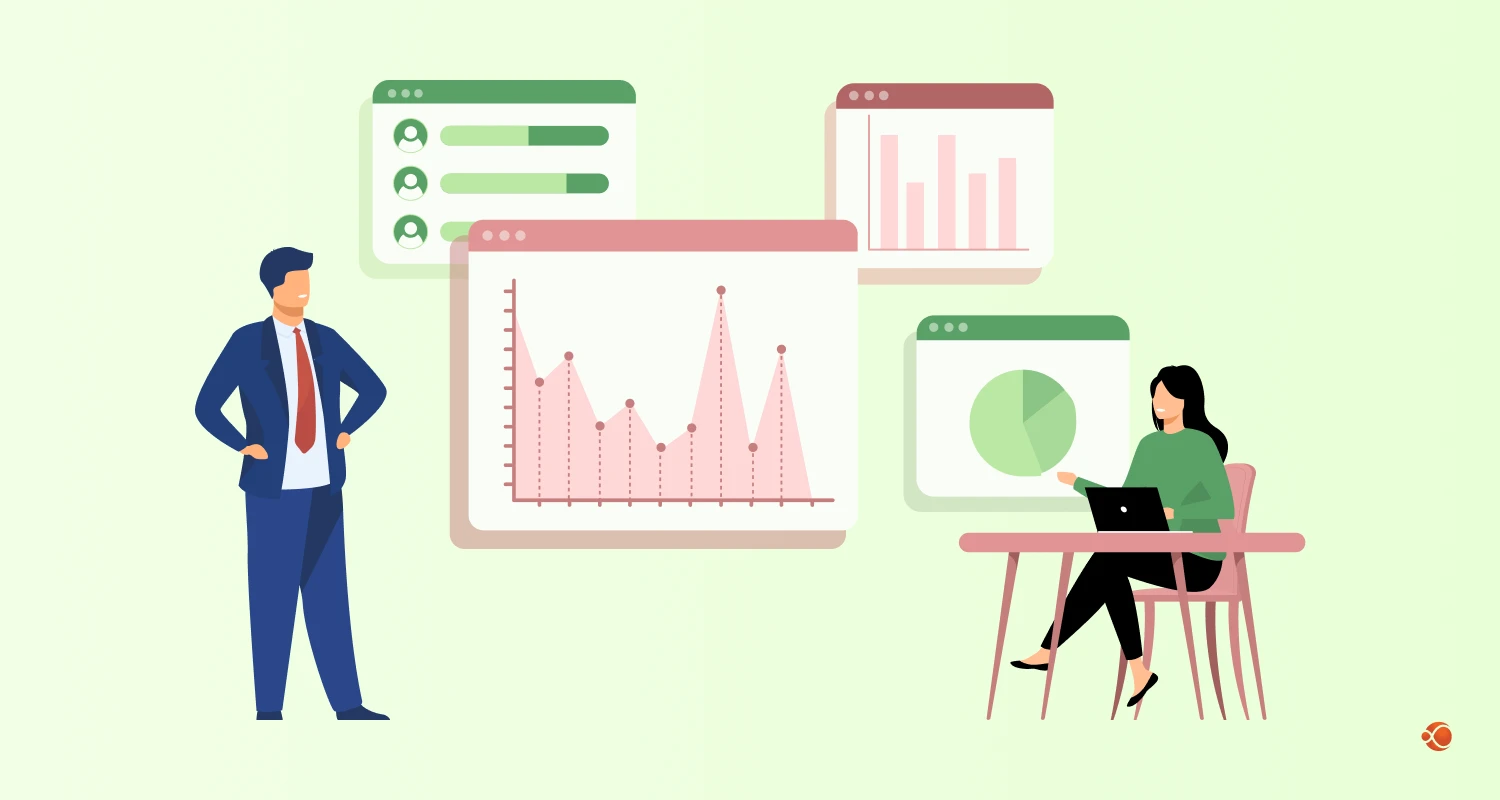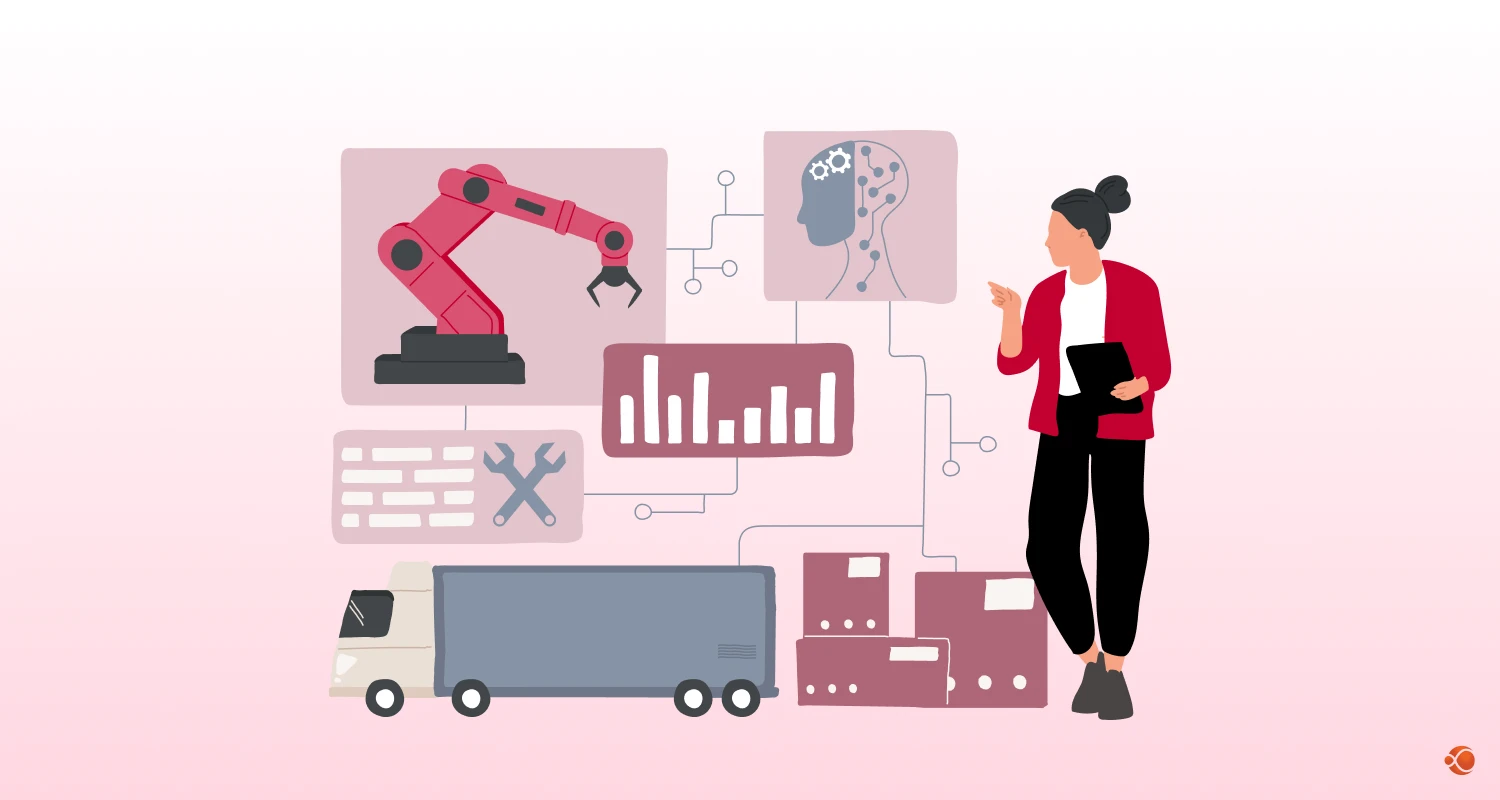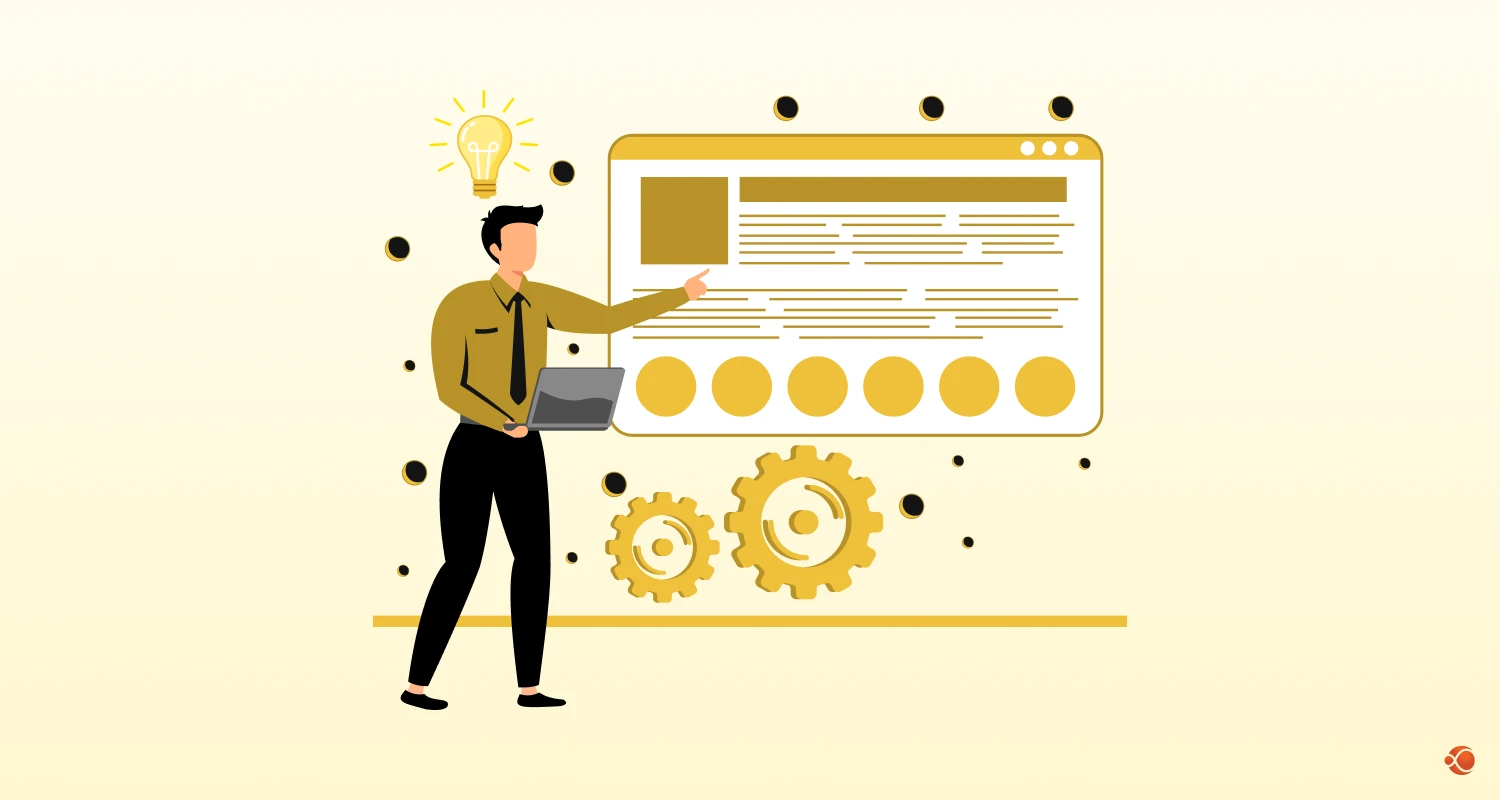Quick Summary: AI in healthcare in Australia is rapidly transforming patient care by improving diagnostic accuracy, streamlining hospital operations, and connecting remote communities through telehealth. With a projected market growth of over 40% annually, and AI supports personalized treatments, resource management, and emergency triage, addressing Australia’s unique geographic challenges and boosting outcomes nationwide.
Australia’s healthcare system stands at an important moment. AI in healthcare Australia represents more than just technological advancement. In fact, it reshapes how medical professionals diagnose, treat, and care for patients across the continent. From bustling Sydney hospitals to remote outback clinics, artificial intelligence is bridging gaps and creating possibilities that seemed impossible just a decade ago.
The combination of artificial intelligence in healthcare in Australia has improved drastically since 2020. What started as an experimental pilot in major teaching hospitals has evolved into a complete system that supports everything, from difficult emergency surgical processes to emergency trials. Here’s the thing: this isn’t just about fancy gadgets or futuristic concepts. It’s about the real AI-driven solutions addressing genuine challenges in Australia’s unique healthcare sector.
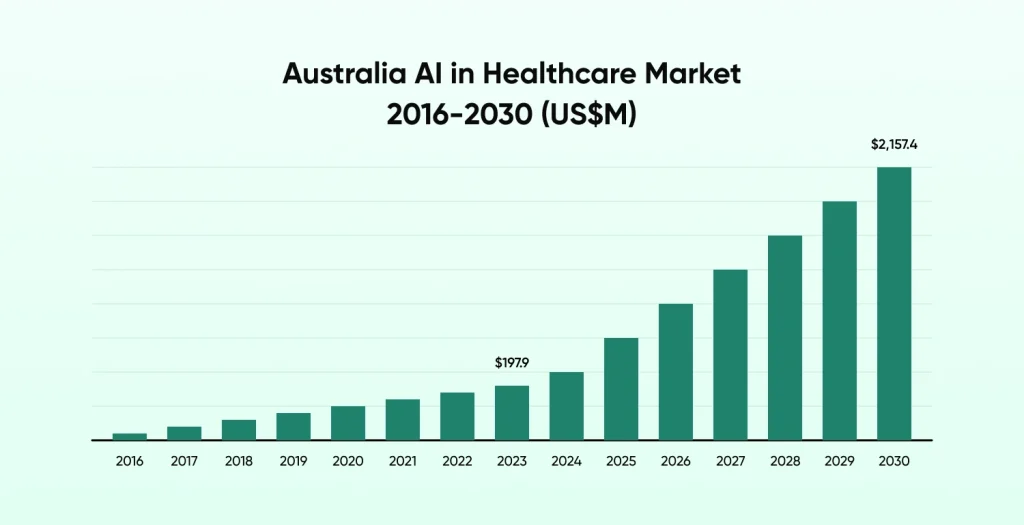
The Australian AI in healthcare market is expected to reach a projected revenue of US$2,157.4 million by 2030. A compound annual growth rate of 40.7% is expected of Australia AI in the healthcare market from 2024 to 2030.
Role of Artificial Intelligence in the Australian Healthcare System
Enhancing Diagnostic Accuracy Through Machine Learning
Artificial intelligence in healthcare extends beyond simple automation. Machine learning algorithms now analyze medical imaging with precision that exceeds human capabilities in specific applications. Australian research institutions are using AI systems that can detect early-stage cancers and other conditions with remarkable accuracy.
Streamlining Administrative Processes
AI systems are directly addressing administrative challenges by automating appointment scheduling, optimizing resource allocation, and managing patient records. The result? Medical professionals will spend more time with patients and less time wrestling with paperwork.
Supporting Clinical Decision Making
AI used in healthcare makes decision-making effective. When a patient presents with complex symptoms, AI systems can rapidly analyze millions of similar cases, treatment protocols, and medical literature to suggest potential diagnoses and treatment options. This doesn’t replace clinical judgement, but it improves it.
Connecting Remote and Rural Communities
Australia’s tyranny of distance creates a unique challenge. Telehealth platforms powered by AI are connecting remote patients with specialists in major cities. These kinds of systems can perform preliminary assessments, monitor important signs remotely, and even predict health deteriorations before they become serious.
Companies specializing in AI software development services are working closely with healthcare professionals to build customized solutions that address Australia’s specific geographic and demographic challenges.
What are the Benefits of AI in Australian Hospitals
Improved Patient Safety and Reduced Medical Errors
Benefits of AI in Australian hospitals include dramatically improved patient safety metrics. AI systems continuously monitor patient vital signs, medication interactions, and treatment protocols. Machine learning based early warning systems can detect subtle changes in patients’ conditions that might be missed by human observation alone.
Enhanced Resource Management and Cost Efficiency
Hospital resource management becomes clearer with AI assistance. Predictive algorithms can forecast patient admission rates, bed management, and allow better staff scheduling. Emergency departments use AI to predict peak periods and adjust staffing accordingly, reducing wait times and improving patient satisfaction.
Accelerated Treatment and Diagnosis Times
AI-powered diagnostic tools can analyze medical scans in reduced timeframes compared to traditional methods. This allows faster treatment decisions for trauma and stroke patients. Emergency departments across Australia report enhanced workflow efficiency when AI tools support clinical teams.
Personalized Treatment Plans
Every patient is different, and AI helps healthcare providers recognize this reality. By analyzing genetic markets, lifestyle factors, medical history, and treatment responses, AI systems can suggest personalized treatment protocols that improve outcomes while minimizing side effects.
Healthcare organizations partnering with healthcare software development services are discovering that custom AI solutions often outperform generic systems because they’re designed specifically for their patient populations and operational workflows.
Top AI Healthcare Tools and Platforms in Australia
| Platforms and Tools | Key Features | Applications |
| IBM Watson Health | AI-driven analysis of patient data against medical databases | Oncology treatment planningDecision supportDiagnosis assistanceDrug discovery |
| Philips HealthSuite Digital Platform | Integration with hospital systems, real-time predictive analytics | Patient monitoringPredictive healthcare analyticsDevice integrationData-driven care management |
| Tempus Precision Medicine Platform | AI-integrated clinical and molecular data; genomic sequencing | Personalized cancer therapyRare disease treatmentTherapy selectionTreatment optimization |
| Telehealth/Remote Monitoring | AI-powered remote patient monitoring; health change detection | Rural & remote healthcare deliveryProactive health managementEarly interventionContinuous monitoring |
| Microsoft Azure Health AI Services | Cloud-based AI for NLP, automated coding, predictive analytics | Medical record processingPatient outcome predictionAutomated codingHealthcare analytics |
IBM Watson Health and Clinical Decision Support
IBM Watson Health has found significant adoption in Australian hospitals, especially for oncology treatment planning. The system analyzes patient data against huge medical databases to suggest treatment options ranked by likelihood of success. Australian hospitals use Watson to support cancer treatment decisions, with healthcare providers reporting improved decision-making support.
Philips HealthSuite Digital Platform
Philips has deployed complete AI platforms across multiple Australian health networks. Their system integrates with existing hospital infrastructure to provide predictive analytics, real-time patient monitoring, predictive analytics and automated systems already in place.
Tempus Precision Medicine Platform
Tempus is a precision medicine platform that uses AI to gather and analyze molecular and clinical data to help doctors make more personalized treatment decisions. It integrates genomic sequencing with patients’ health data to forecast how individuals might respond to specific therapies. This AI healthcare tool is highly useful in oncology and rare disease treatment, where a one-size-fits-all approach is often ineffective. Doctors can use Tempus to stay ahead in tailoring therapies to a patient’s unique profile.
Telehealth and Remote Monitoring Platforms
Australia’s huge distances make telehealth crucial. AI-powered platforms like HealthDirect and specialized solutions from companies that offer generative AI development services are building sophisticated remote monitoring capabilities that can detect health changes before patients even notice symptoms.
Microsoft Azure Health AI Services
Open Health Stack is an open-source building block built on an interoperable data standard. Microsoft’s Azure cloud platform provides complete AI services specifically designed for healthcare applications, including NLP (natural language processing) for medical records, automated coding systems, and predictive analytics for patient outcomes.
Real-World Applications of AI in Australian Healthcare
Emergency Department Triage and Management
Examples of AI in healthcare Australia include triage systems that assess patient severity more accurately than traditional methods. Australian hospitals have implemented AI triage systems that improve patient flow management and optimize emergency department operations through predictive analytics.
Radiology and Medical Imaging
Medical imaging represents one of AI’s most successful healthcare applications. Australian radiologists now routinely use AI to detect everything from brain tumors to skin cancer. The technology doesn’t replace radiologists; it makes them more effective by highlighting areas of concern and providing second opinions.
Drug Discovery and Development
Australian pharmaceutical research benefits hugely from AI acceleration. Research institutions like the Garvan Institute use machine learning to find potential drug targets for rare diseases, reducing research timelines. This work has particular importance for diseases that disproportionately affect Indigenous Australians and other specific populations.
Mental Health Support and Monitoring
Mental health applications of AI driven healthcare include chatbots and monitoring systems that provide 24/7 support for patients with depression, anxiety, and other conditions. These systems can detect changes in speech patterns, text communication, and behavior that might indicate deteriorating mental health.
Organizations looking to hire AI developers focus on mental health applications because of this significant unmet need in this area and the potential for AI to scale support services effectively.
How to Integrate AI into Your Healthcare Operations
Step 1: Assessment and Planning Phase
Integration begins with an honest assessment of current capabilities and needs. Healthcare organizations must find specific problems that AI can solve rather than implementing technology for its own sake. What this really means is focusing on patient outcomes and operational efficiency rather than technological novelty.
Step 2: Staff Training and Change Management
Successful AI integration requires comprehensive staff training. Medical professionals need to understand how AI tools work, their limitations, and how to interpret AI-generated insights. Change management becomes crucial because AI often modifies established workflows and decision-making processes.
Step 3: Data Quality and Infrastructure Requirements
AI systems need high-quality, well-organized data to function effectively. Many Australian healthcare organizations discover that data preparation represents 60-80% of AI implementation efforts. Infrastructure upgrades often become necessary to handle increased computational demands and data storage requirements.
Step 4: Compliance and Regulatory Considerations
The Therapeutic Goods Administration(TGA) has some specific requirements for AI medical devices. Healthcare organizations must make sure their AI implementations comply with privacy laws, medical device regulations, and professional standards. This complexity leads organizations to partner with experienced AI healthcare startups that understand regulatory requirements.

Case Studies: AI Success Stories in Australian Healthcare
AI for People with Intellectual Disabilities – UTS Case Study
University of Technology Sydney is developing ethical, co-designed AI tools specifically tailored for people with intellectual disabilities to improve healthcare access and outcomes.
Challenge
People with intellectual disabilities face huge healthcare disparities due to communication barriers, poor risk assessment protocols, inadequate resource allocation, and a lack of tailored analytics in healthcare settings.
Solution
UTS proposes developing AI tools through co-design methods that focus on:
- Personalized communication interfaces
- Optimized resource allocation systems
- Enhanced risk assessment protocols
- Specialized analytics dashboards
- Built-in bias detection and prevention mechanisms
Impact
- Reduces healthcare disparities for a vulnerable population through tailored AI solutions
- Ensures ethical development through co-design with the disability community
- Creates personalized communication tools that improve patient-provider interactions
- Establishes bias-resistant systems that protect against discrimination in healthcare delivery
Sepsis Risk Prediction – Westmead Hospital & eHealth NSW
A collaborative pilot between eHealth NSW and multiple partners deployed real-time AI-powered sepsis detection in Westmead Hospital’s emergency department to catch life-threatening infections earlier.
Challenge
Sepsis frequently goes unrecognized or is diagnosed too late in emergency departments. The legacy paper-based system only identified 2-2.5% of true sepsis cases, while epidemiological data suggests 5-7% of ED presentations are sepsis-related. This delay leads to increased mortality and complications.
Solution
An AI ensemble model (combining linear and logistic regression) continuously analyzes vital signs entered into the electronic medical record during triage. The system calculates real-time sepsis risk scores and alerts clinicians through a dashboard when patients show high-risk indicators.
Impact
- Dramatically improved detection rates from 2-2.5% to epidemiologically accurate 5-7% of cases
- Reduced manual errors and fatigue alert through automated EMR integration
- Monitored critical metrics, including time to antibiotic administration and mortality rates
- Positioned for wider rollout across NSW hospitals, potentially saving thousands of lives annually
Healthcare organizations seeking to replicate these successes often partner with experts in AI MVP development services to make proof-of-concept systems before full-scale implementation.
Future Trends of AI in Healthcare
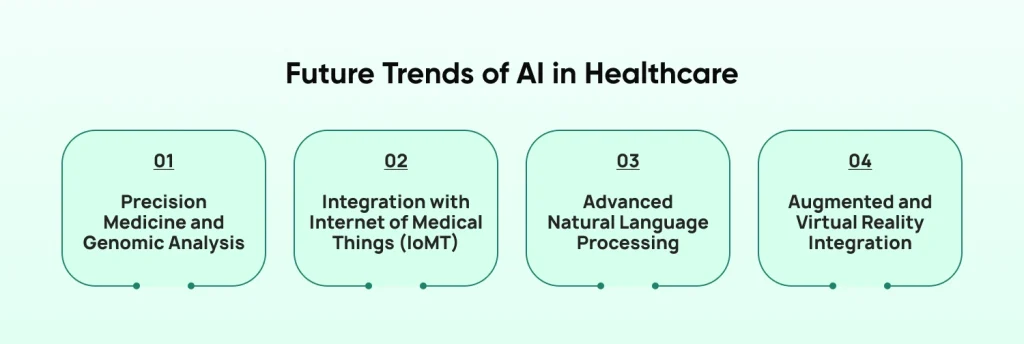
Precision Medicine and Genomic Analysis
The future of AI in healthcare services is in increasing precision in medicine. AI systems will analyze individual genetic profiles, lifestyle data, and environmental factors to create highly personalized treatment protocols. Australia’s participation in global genomic research projects positions the country well for these developments.
Integration with Internet of Medical Things (IoMT)
Implantable sensors and wearable devices will generate continuous streams of health data. Such kinds of AI systems will analyze this information to detect health changes in real-time, potentially preventing medical emergencies before they occur. The implications for Australia’s aging population are particularly important.
Advanced Natural Language Processing
AI for health care will understand and respond to natural language, making technology more accessible to both healthcare providers and patients. Voice-activated AI assistants will help patients manage medications, access health information, and schedule appointments.
Augmented and Virtual Reality Integration
AI will power sophisticated simulation and training systems for medical education and surgical planning. Australian medical schools are already experimenting with VR systems that allow students to practice procedures in risk-free virtual environments.
If you are looking for AR/VR integration, then it is advisable to consider a credible app development company in Melbourne.
Why Choose CMARIX for Your Healthcare AI Development Needs
Proven Expertise in AI technology in Healthcare Solutions
CMARIX is one of the leading technology companies for healthcare organizations seeking to implement AI solutions. With extensive experience in developing custom healthcare applications, they understand the unique regulatory requirements and compliance standards that govern Australia’s healthcare sector. Their team of skilled AI developers has successfully delivered AI-powered solutions for medical imaging, clinical decision making, and patient monitoring.
Comprehensive AI Development Services
From initial consultation to full deployment and ongoing support, CMARIX offers end-to-end AI development services specifically tailored for healthcare applications. Their expertise spans natural language processing for medical records, machine learning model development, predictive analytics for patient outcomes, and integration with existing hospital management systems. This complete approach makes sure that healthcare organizations receive solutions that smoothly integrate with their current workflows.
Regulatory Compliance and Security Focus
Healthcare AI development requires strict adherence to privacy laws and medical device regulations. CMARIX maintains deep knowledge of Australia’s Therapeutic Goods Administration (TGA) requirements and healthcare data protection standards. Their development processes incorporate security-by-design principles, making sure that patient data remains protected while allowing innovative AI applications that improve healthcare delivery across Australia’s different healthcare sectors.
Final Words
AI in healthcare Australia represents a fundamental transformation that’s already transforming patient care delivery. The evidence demonstrates clear benefits: enhanced patient safety, improved diagnostic accuracy, and optimized resource management across hospitals nationwide. Government investments exceeding $57 million signal a strong commitment to this technological evolution. Machine learning in healthcare continues advancing rapidly, with precision medicine and IoMT integration promising even greater improvements ahead.
The transformation requires thoughtful implementation, comprehensive training, and regulatory compliance. Yet organizations embracing AI strategically achieve better outcomes while positioning themselves for future innovations. Australia’s geography and research capabilities create ideal conditions for healthcare AI leadership in the Asia-Pacific region. The question isn’t whether AI will reshape healthcare; it’s how quickly organizations will adapt to harness its potential.
FAQs for How to Use AI in Healthcare
How Does AI Affect Healthcare in Australia?
AI affects healthcare in Australia by reducing medical errors, improving diagnostic accuracy, and enhancing patient safety through continuous monitoring systems. It also allows better resource management in hospitals and connects remote patients with specialist care through telehealth platforms.
What Are the Benefits of AI in the Healthcare Sector in Australia?
The major benefits include faster diagnosis times, personalized treatment plans, improved emergency response coordination, and increased administrative efficiency. AI also helps in addressing Australia’s geographic challenges by allowing remote monitoring and telehealth services for patients in rural areas.
Can AI Improve Patient Diagnosis and Treatment in Australia?
Yes, AI improves patient diagnosis and treatment by analyzing medical imaging with enhanced precision, allowing early detection of conditions like sepsis and cardiac events and supporting clinical decision-making with data-driven insights. AI systems can process complex medical data faster than traditional methods.
What Are Some Real-Life Examples of AI in Healthcare in Australia?
Real-life examples include Cochlear’s smart implants with on-device AI for personalized hearing, Melbourne’s AI traffic optimization improving emergency response times, Harrison.ai’s chest X-ray analysis tools used in multiple hospitals, and predictive analytics systems for sepsis prevention in major healthcare networks.
How Does AI Improve Hospital Operations in Australia?
AI improves hospital operations through predictive scheduling for staff and bed management, automated patient triage systems, real-time resource allocation optimization, and streamlined administrative processes. Emergency departments use AI to predict peak periods and reduce patient wait times while maintaining quality care standards.





